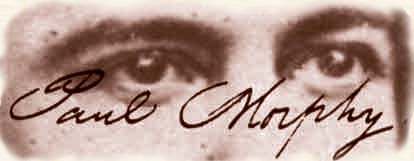

| THE LIFE AND CHESS OF PAUL MORPHY SAMUEL BODEN |
|
We may fairly say that in beauty, depth, harmony and variety the combinations of the chess board approach as near perfection as anything which the human intellect has conceived. -Samuel Boden, 1859 Samuel Standidge Boden was born in 1826 in Hull, a small, English town of about 25,000 that supported itself through fishing and cotton weaving. Not much is available about his early life, but as an adult he worked for the railway system and dabbled in painting and art criticism.
1.e4 e5 2.Nf3 Nf6 3.Bc4 Nxe4 4.Nc3 Nxc3 5.dxc3 f6 resulting in this position. He's also lends his name to the Boden-Max Lange variation of the Evans Gambit Accepted and the Boden Variation in the Ruy Lopez In spite of this, Boden said, ""In a gambit you give up a Pawn for the sake of getting a lost game"
Finally, he's known for a mating pattern he used in his game with Schulder in 1853, called appropriately, Boden's Mate. During the First International Chess Tournament of London 1851, there was another smaller, less prestigious tournament taking place, commonly called the Provincial Tournament. Boden beat out Ranken to win first prize. He took second place in Manchester 1857 behind L÷wenthal. But he never played much tournament chess. In match play he defeated both Wyvill and "Alter" (Rev. Owens). While he only scored 1 win and 1 draw against Morphy's 5 wins in casual play, Morphy considered Boden his strongest English opponent. Boden was chess editor of the Field from 1858 - 1873 when Cecil de Vere took over. Samuel Boden died in 1882
|